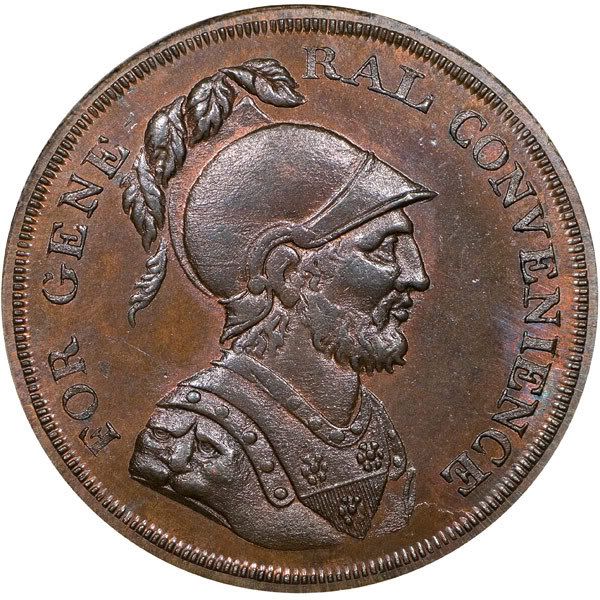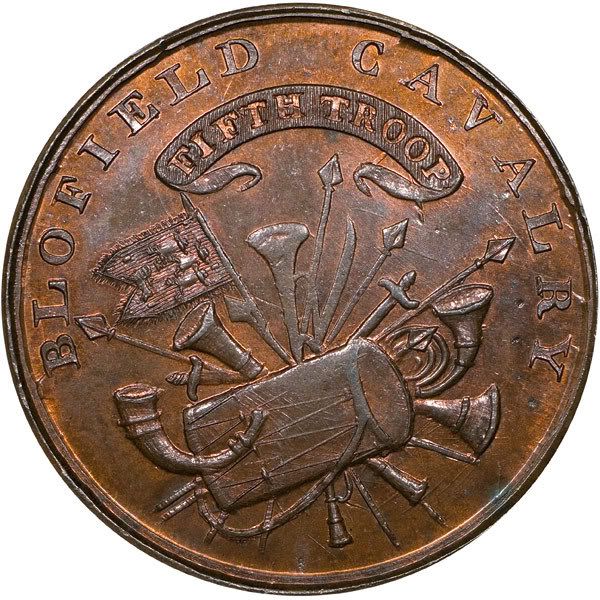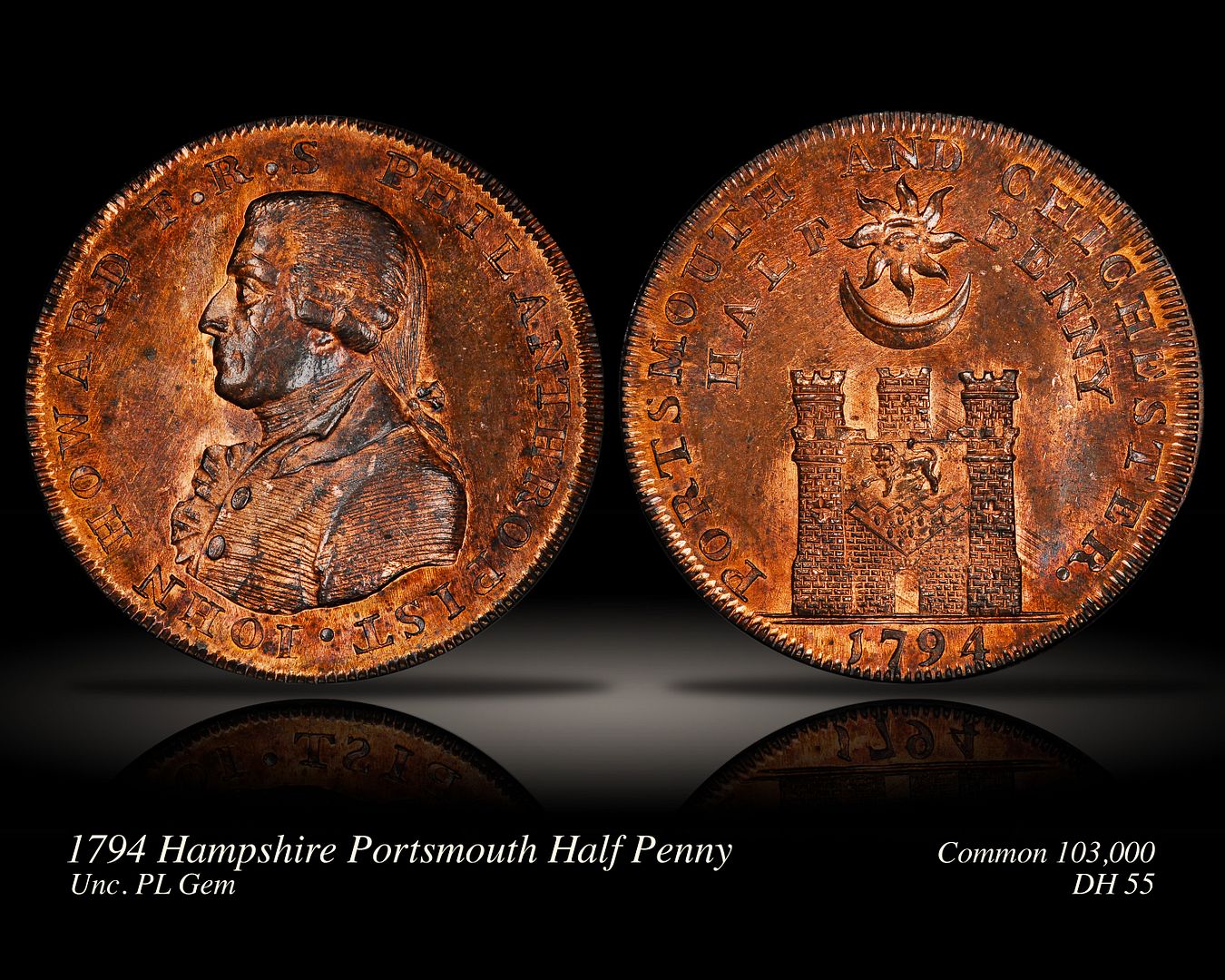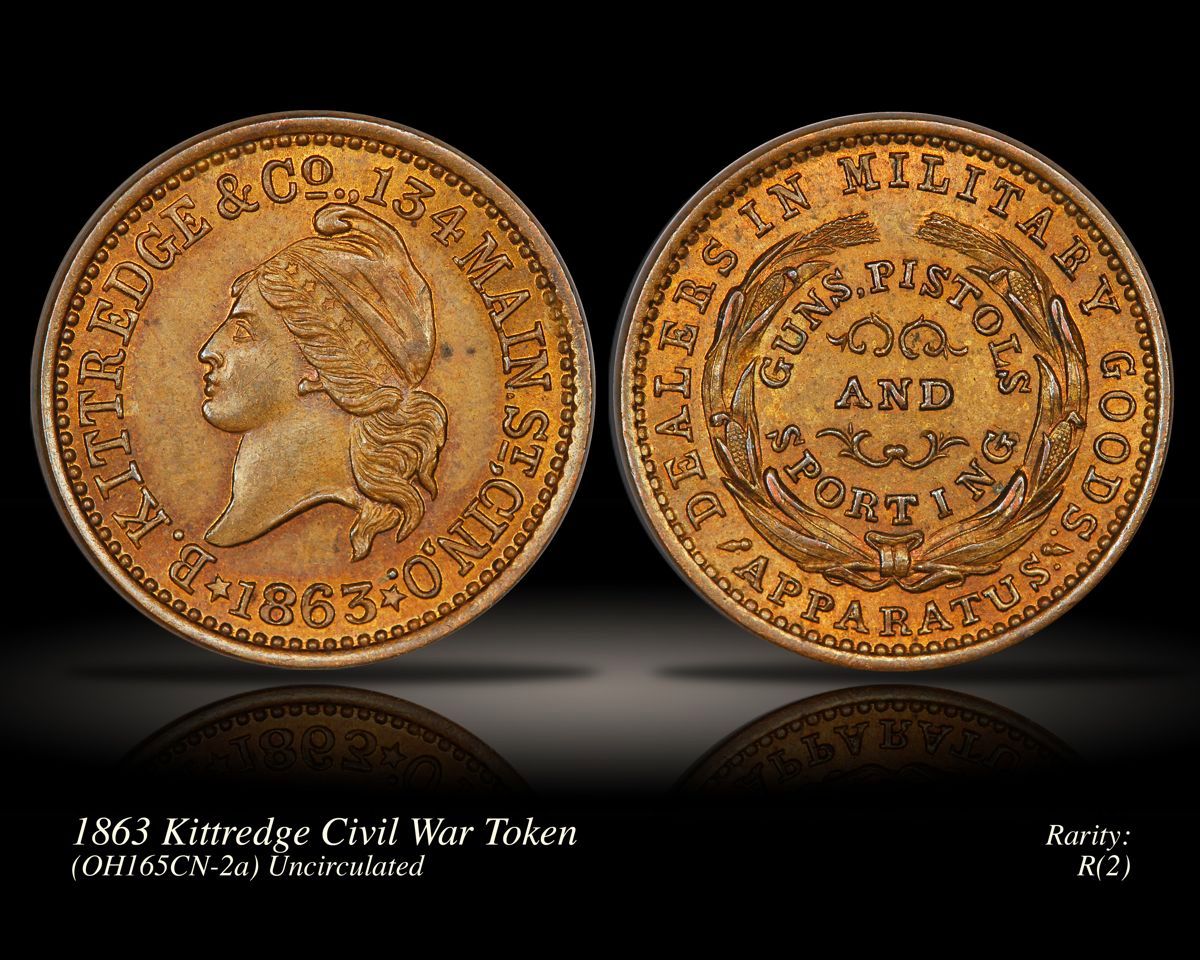Tokens: Rare Conder's w/History Lesson (!), US Civil War Token
I have two choice Conder tokens and one U.S. Civil War token that I am reluctantly willing to part from my collection. I would be happy to accept a personal or cashier’s check or a USPS money order. I don’t have a PayPal account. All prices include shipping and insurance expense. I’m willing to accept a return within 7 days for a full refund assuming the tokens/slabs are received back undamaged, but the buyer must pay for return shipping and insurance if a refund is sought.
For the two Conder tokens, I think it important to share a little context since that is part of the charm of collecting them. Besides, I want them to go to a good home that will be informed regarding their historical themes.
c1794 Norfolk DH-11 Blofield Half Penny Conder Token, ex-CRO, Rare, NGC MS64 BN. $550. Note this specimen has a very flashy appearance due to the luster perhaps not fully captured from Mark Goodman’s pictures.
It is considered to be a “private token”, meaning it was issued for collectors despite it being classified as a half penny. Their cost of production bore no relation to their face value and very few were minted of each type of collector token (in this particular die combination < 75 made).
This token is a mule joining two dies used on other tokens. The reverse is a common depiction of the mythical Sir Bevois who killed 30,000 with his magical sword (including giants!). I speculate that the lion on his shoulder likely represents one of two lions he slayed while protecting his ladylove who was under attack (again part of the myth). The statement “For General Convenience” was probably an indication of the token having some trading value, though in this rare muling, it would not have been used as such.


The token’s issuer was probably one of the members of the “Fifth Troop” of the Loyal Norfolk Yeomanry Cavalry. Blofield is a parish some eight miles east of Norwich. (R.C. Bell - “Tradesmen’s Tickets and Private Tokens 1785-1819”). Out of fear of Napoleon invading Britain, many men joined militia regiments. By 1805, 800,000 had committed themselves, that is, 20% of the male population in contrast to 7% in France. I really like the musical instruments shown. One can imagine they were noisily played during a proper march!
1794 Hampshire DH-55 Portsmouth Half Penny Conder Token, ex-Jerry Bobbe, condition scarce, NGC MS64 RB. $350 This token is proof-like with some interesting die polish lines as seen near the castle. A blazing orange in appearance. Picture by Todd Pollock.
Howard wrote The State of Prisons that “was not only groundbreaking in terms of prison reform, but was a monument to John Howard's ability to be thorough, detailed and constructive. It includes a general study of the distress in prisons, proposed improvements, a detailed analysis of prison conditions and statistical tables. Parliament passed two more prison Acts, in 1778 and 1781. Aware that making it law doesn't automatically ensure the changes will be made quickly, Howard continued touring the prisons of England and Europe. He not only collected information about conditions, but revisited many to monitor the progress of reforms (Godber, 1977, pp.10-11). For the next several years, John Howard worked ceaselessly, making five more tours of European prisons, as well as visiting those in England. He kept up with his responsibilities at his Cardington estate as well. Health matters concerned him increasingly, inspiring him to publish a second book in 1789 on Lazarettos - the plague ships.”
“His stamina became legendary. It was hard to imagine that he was once a sickly, delicate youth. He could ride 40 miles a day, needed little sleep and could withstand considerable heat and cold. On one of his trips to Ireland he gave up his berth to a maid servant and slept on deck. He maintained his simple vegetarian diet of fruit, vegetables, bread and milk or tea. One of the reasons he chose traveling by horseback was to disperse the bad odours from the jail he had been visiting, although he took pains to change his clothes as soon afterwards as possible. In 1786 he even traveled to Venice on a plague-infested ship in order to observe firsthand the conditions on a Lazaretto (Godber, 1977, pp.11-12). However, his spartan regimen cannot account for all of his extraordinary ability to withstand the physical demands, pestilence and filth of his prison tours. His friends observed that by this time John Howard possessed an air of purpose, serenity and vigor that seemed to surround him like a magic cloak. Howard himself wrote, "Being in the way of my duty, I fear no evil" (Godber, 1977, p.12).” Quote from the John Howard Society.

1863 Cincinnati Kittredge & Co. Token, F-165CN-2a, NGC MS63 BN. SOLD A pretty token with orange highlights. The obverse spot is much more pronounced in the picture than what can be seen viewing this small token in hand. Sorry, no history lesson offered with this one, hence the low price!

For the two Conder tokens, I think it important to share a little context since that is part of the charm of collecting them. Besides, I want them to go to a good home that will be informed regarding their historical themes.
c1794 Norfolk DH-11 Blofield Half Penny Conder Token, ex-CRO, Rare, NGC MS64 BN. $550. Note this specimen has a very flashy appearance due to the luster perhaps not fully captured from Mark Goodman’s pictures.
It is considered to be a “private token”, meaning it was issued for collectors despite it being classified as a half penny. Their cost of production bore no relation to their face value and very few were minted of each type of collector token (in this particular die combination < 75 made).
This token is a mule joining two dies used on other tokens. The reverse is a common depiction of the mythical Sir Bevois who killed 30,000 with his magical sword (including giants!). I speculate that the lion on his shoulder likely represents one of two lions he slayed while protecting his ladylove who was under attack (again part of the myth). The statement “For General Convenience” was probably an indication of the token having some trading value, though in this rare muling, it would not have been used as such.


The token’s issuer was probably one of the members of the “Fifth Troop” of the Loyal Norfolk Yeomanry Cavalry. Blofield is a parish some eight miles east of Norwich. (R.C. Bell - “Tradesmen’s Tickets and Private Tokens 1785-1819”). Out of fear of Napoleon invading Britain, many men joined militia regiments. By 1805, 800,000 had committed themselves, that is, 20% of the male population in contrast to 7% in France. I really like the musical instruments shown. One can imagine they were noisily played during a proper march!
1794 Hampshire DH-55 Portsmouth Half Penny Conder Token, ex-Jerry Bobbe, condition scarce, NGC MS64 RB. $350 This token is proof-like with some interesting die polish lines as seen near the castle. A blazing orange in appearance. Picture by Todd Pollock.
Howard wrote The State of Prisons that “was not only groundbreaking in terms of prison reform, but was a monument to John Howard's ability to be thorough, detailed and constructive. It includes a general study of the distress in prisons, proposed improvements, a detailed analysis of prison conditions and statistical tables. Parliament passed two more prison Acts, in 1778 and 1781. Aware that making it law doesn't automatically ensure the changes will be made quickly, Howard continued touring the prisons of England and Europe. He not only collected information about conditions, but revisited many to monitor the progress of reforms (Godber, 1977, pp.10-11). For the next several years, John Howard worked ceaselessly, making five more tours of European prisons, as well as visiting those in England. He kept up with his responsibilities at his Cardington estate as well. Health matters concerned him increasingly, inspiring him to publish a second book in 1789 on Lazarettos - the plague ships.”
“His stamina became legendary. It was hard to imagine that he was once a sickly, delicate youth. He could ride 40 miles a day, needed little sleep and could withstand considerable heat and cold. On one of his trips to Ireland he gave up his berth to a maid servant and slept on deck. He maintained his simple vegetarian diet of fruit, vegetables, bread and milk or tea. One of the reasons he chose traveling by horseback was to disperse the bad odours from the jail he had been visiting, although he took pains to change his clothes as soon afterwards as possible. In 1786 he even traveled to Venice on a plague-infested ship in order to observe firsthand the conditions on a Lazaretto (Godber, 1977, pp.11-12). However, his spartan regimen cannot account for all of his extraordinary ability to withstand the physical demands, pestilence and filth of his prison tours. His friends observed that by this time John Howard possessed an air of purpose, serenity and vigor that seemed to surround him like a magic cloak. Howard himself wrote, "Being in the way of my duty, I fear no evil" (Godber, 1977, p.12).” Quote from the John Howard Society.

1863 Cincinnati Kittredge & Co. Token, F-165CN-2a, NGC MS63 BN. SOLD A pretty token with orange highlights. The obverse spot is much more pronounced in the picture than what can be seen viewing this small token in hand. Sorry, no history lesson offered with this one, hence the low price!

Seated Half Society member #38
"Got a flaming heart, can't get my fill"
"Got a flaming heart, can't get my fill"
0
Comments
"Got a flaming heart, can't get my fill"
"Got a flaming heart, can't get my fill"
"Got a flaming heart, can't get my fill"
"Got a flaming heart, can't get my fill"